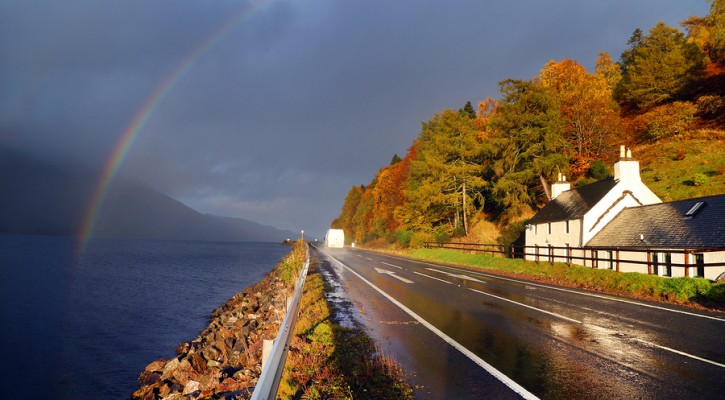
Driver’s Guide to Wet Roads
September 23, 2014
Fall is sure to bring plenty of rainy weather this year, which means lots of driving on wet roads. Oil, engine fluids and water combine to make streets extra slick. When rain is especially heavy, standing water can cause hydroplaning. Before things get too wild out there, read these smart driving tips and you’ll be able to handle the wet roads like a pro.
Love Your Tires
You can improve traction in wet weather by maintaining good tires. Make sure the tread depth is at least 2/32-inch. You can test depth using a tread depth gauge or using the penny test. Then, use a tire gauge to test for proper inflation. While you’re at it, be sure to check for any wear & tear that could result in a leak or blowout.
Use Your Lights
Be sure to use headlights while driving in rainy weather. This will allow you to see and be seen better.
Improve Visibility
There are a few things you can do to improve your visibility. Maintaining windshield wiper fluid will allow you to quickly clear your view when those first few rain drops combine with dirt and dust to create a cloudy windshield. You can also use a rain repellent product on windows and mirrors to help water run off clean and clear. Also, don’t forget to clean the inside of your windows.
Drive Slower
Driving slower also improves visibility, as well as reduces your risk of losing control and hydroplaning. It’s also wise to leave more room when following other vehicles in traffic. Other cars and trucks spray water from the road, which could further reduce your visibility in the rain. Plus, slick asphalt makes it take longer to stop.
Know How To Regain Control
If your car starts to skid, don’t panic! Continue to look and steer the car in the direction you want to go and avoid slamming on the brakes to maintain control of the vehicle.
Know When to Pull Over
If the downpour or spray from other vehicles is too heavy, just stop driving. When visibility is so low that you can’t see the edges of the road or the vehicles in front of you, pull off the road as far as possible, turn on your hazard lights and wait out the storm.
Thousands of crashes occur each year due to rainy conditions. However, all this can be prevented with just little bit of know-how and smart, quick thinking. Keep these tips in mind the next time you drive on wet roads, and you’ll be prepared for anything.
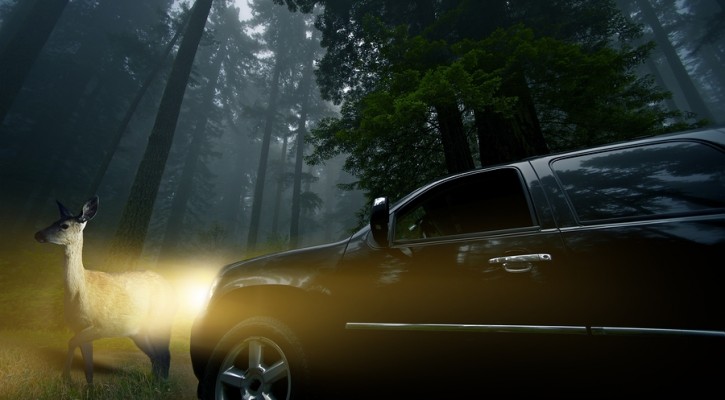
Deer Season
September 22, 2014
No, we’re not talking about the hunting season. We’re talking about the season when drivers are most likely to hit a deer.
The season of deer-infested roads is just around the corner. If you haven’t already noticed an increased number of deer crossings lately, then just wait. As mating season and hunting season begin, drivers are sure to see more deer on the roads than they have all year.
While many folks in urban and suburban areas think these animals are peaceful, majestic or Bambi-like adorable, drivers in rural areas know better. Deer are infamous in their ability to cause traffic accidents. You may not be surprised to find out that many people you know have hit a deer. However, there are also plenty of drivers out there that have been hit by a deer. They seem to stand there by the side of the road and wait as you approach, then jump out at the last minute in a suicidal attempt to hit your vehicle. Or, maybe they’re just seeing if they can make you slam on your brakes and swerve off the road?
To top it all off, many states are witnessing an increase in the already-dangerously overpopulated numbers of deer. So, not only will drivers be seeing more deer on the road than in previous months, but they will be seeing more deer on the road than in previous years as well.
October, November and December are the months that drivers are most likely to have a deer-related traffic accident. So, keep these tips in mind as fall turns into winter and the animals flee to the streets:
- Deer are most active between 6 PM and 9 PM. If at all possible, avoid driving in rural or even some suburban areas during this time.
- When driving at night, use your high beams as much as possible. As long as there are no other drivers in front of you, or other legal restrictions, the high beams should be on. This will allow you to see deer as they approach the road from nearby woods.
- Pay attention to DEER CROSSING signs. These signs let drivers know where deer are most active.
- Never drive distracted. Drivers should never drive distracted, whether it’s deer season or not. However, distracted driving is even more likely to result in an accident when it is done on a deer-saturated street.
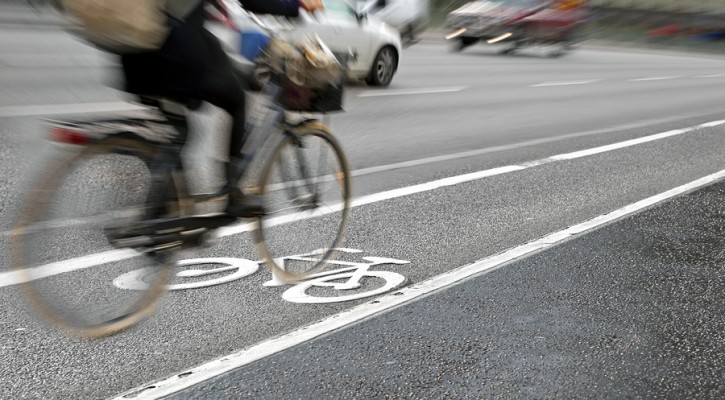
California’s Bicycle Buffer Zone
September 18, 2014
On September 16, 2014, the Three-Feet-for-Safety Act took effect. This new law makes it illegal for drivers to pass within three feet of a bicycle, giving cyclists a safer bicycle buffer zone when traveling on roadways.
In case you haven’t seen it, the Three-Feet-for-Safety video has been making the rounds. It makes a great case for the bicycle buffer zone, and it’s actually really, really funny:
As funny as the video is, bicycle safety is a serious matter. Drivers often get a little too close for comfort when passing bicycles. Likewise, cyclists often operate their bicycles recklessly, riding outside of bike lanes and ignoring traffic signs and lights. It’s a two-way street, so to speak.
Hopefully this new California law will make things safer – at least on one side of the metaphorical street. Drivers in every state should give cyclists plenty of room and pass them as safely as possible. Not only will it save money on traffic fines, but it will save lives.
So the next time you have to share the road with a cyclist, remember the three-foot bicycle buffer zone.
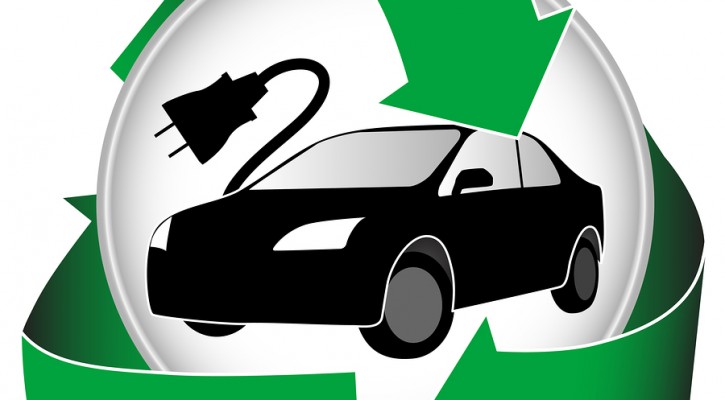
Electric Vehicles Not So Slow and Boring
September 16, 2014
Think eco-friendly, electric vehicles are slow, weak and boring? Think again.
Killajoule, the world’s fastest electric motorcycle, recently achieved a top speed of 241.901 mph at the Bonneville Salt Flats. It’s actually the fastest sidecar motorcycle of any type. Then there’s the growing number of electric vehicles dominating the Pikes Peak International Hill Climb race. And, the Buckeye Bullet from the Ohio State University is a four-wheeled electric that has topped 300 mph.
The truth is, electric vehicles have some great advantages over gas engines. They have more torque, and can leave other muscle cars in the dust from a dead stop. So, the slow and boring image is actually quite unfair.
Want to know more about electric vehicles? This excellent post from cartalk.com has the lowdown on electric vehicles past, present and future:
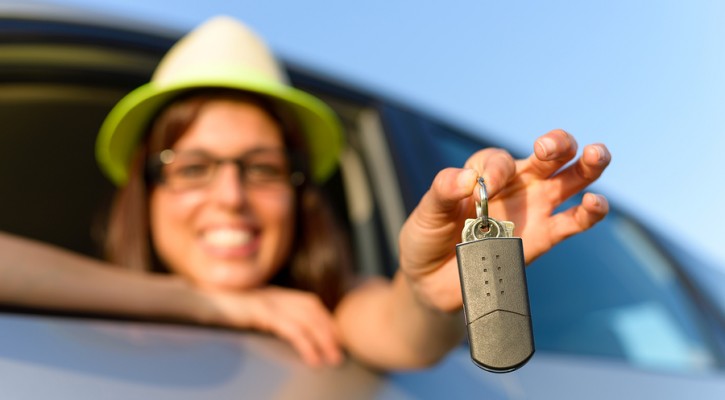
Safe Teen Drivers Reap the Rewards
September 14, 2014
As a teen, it’s easy to feel invincible. All the crash and death statistics in the world don’t stand a chance in the minds of some teenage drivers. However, consequences aren’t the only reason to #drivesafe. Rewards can be much more influential, especially when those rewards lead to more freedom for thrill-seeking and patented teenage mistake-making off the road.
Trust
Sometimes, being a teenager can feel like you’re always on trial – and always guilty until proven innocent. Nobody trusts teens. Their up to no good. Their looking for trouble. Right? Wrong. You can change people’s perceptions by being the unexpectedly good teen driver. Build up a reputation for driving safely, and your parents, friends, family, teachers and other folks around town will trust that you are a responsible person. And, trust is a priceless gift these days – even if it’s just a trust in your driving skills.
Money
Safe teen drivers unexpectedly find that their wallets have more money in them. Why? There are many reasons. For one, safe driving saves gas. By driving the speed limit, accelerating and stopping gradually, and staying a safe following distance in traffic, you will be using up less gas. Safe driving also reduces maintenance costs, since easy-going driving habits result in less engine and tire wear. Finally, by avoiding collisions and fender-benders, safe teen drivers spend less money on repairs and insurance costs.
Respect
People have no respect for terrible drivers. It’s pretty hard to respect anyone that drives dangerously, tailgates, or cuts you off in traffic. Whether you’re sharing the road with a bad driver, or have the misfortune of riding along with one, it’s never a pleasant experience. In fact, it can be downright frightening. Meanwhile, the rare safe and courteous drivers are very much appreciated. They are the drivers the make the road a better place, and they are the ones that passengers most respect.
Freedom
The better your driving skills, the more freedom you will have to drive. Parents will feel more comfortable giving you the car keys. Your friends’ parents will feel more comfortable letting their offspring join in on your joy rides. And, as you grow older, you will have more experience driving and maintaining your vehicle, allowing you the freedom for countless cross-country road trips.
Safe teen drivers certainly have it good. So, when you get your license, just take it easy and drive responsibly and you’re sure to reap these rewards in no time.
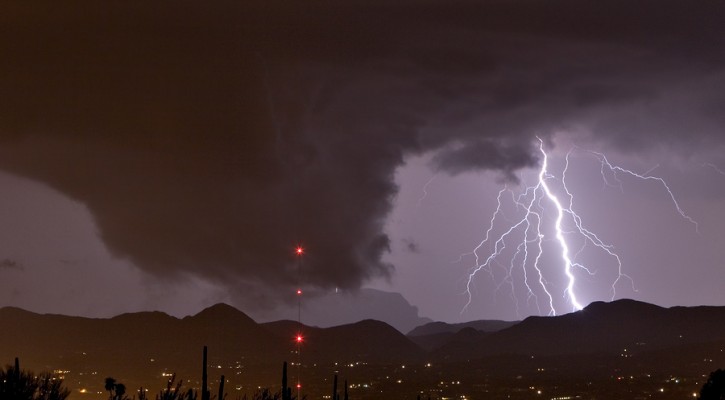
Driving Through El Nino
September 12, 2014
Rain is on the way! REJOICE!
As vast parts of the country suffer through prolonged drought, this year’s El Nino is a welcome cluster of storms. However, all this rainy weather is sure to pose some safety hazards as well.
Drive smart through El Nino by studying up on these tips and tricks:
Avoid Dangerous Travel. During severe weather and flooding, it’s best to not drive at all. However, many drivers have obligations that will force them onto the road in spite of present dangers.
Drive Slow. This is a no-brainer. Driving slow will not only help maintain traction and control on slippery roads, but also allow you to see hazards sooner.
Avoid Puddles. Puddles often form where roads have been damaged. A deep pothole will not only damage your tires, but also your engine. Water deeper than 6 inches will cause most vehicles to lose control and/or stall.
Turn Around Before Your Drown. If water is flowing over the road, then turn around. It only takes 6 inches to stall a vehicle, 1 foot to float it, and 2 feet to sweep it down the river or creek. This applies to trucks and SUV’s as well.
Be thankful for the much-needed rain brought by El Nino this year. And, be careful as you navigate your way through it!
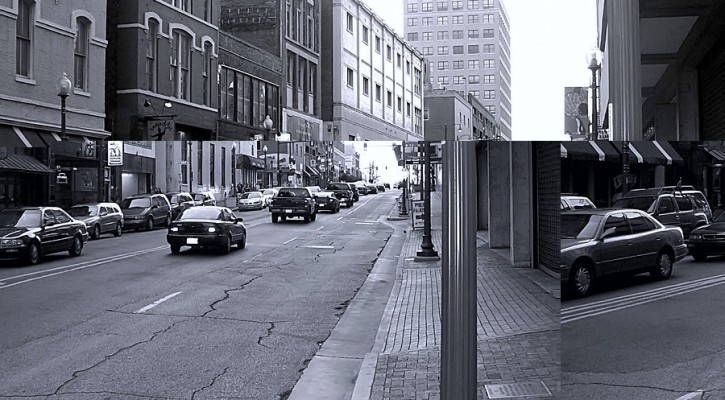
California’s Plan to Pay for Roads
September 10, 2014
In the past, the gas tax was used to pay for roads. Those were the days. Americans drove gas-guzzling cars and trucks, driving for both fun and for commute. Then they wised up. They drove less, drove fuel efficient vehicles, and began to save money by using public transportation.
However, those money-saving tactics came at a cost. With less tax revenue from gas taxes, the nation’s roads have been underfunded. Building new roads to meet today’s traffic needs has become more difficult, as the states struggle just to keep up with repairs on existing infrastructure. Traffic has gotten worse. Potholes and cracks have increased. And, few lawmakers want to raise taxes to deal with the problem.
However, California may be paving they with their plan to pay for roads. See the full story here:
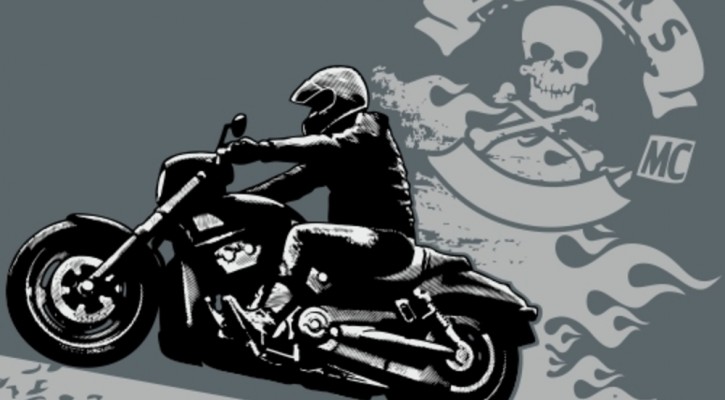
A Message From Motorcyclists
September 9, 2014
Dear Motorists,
The riding season is waning, and fewer motorcyclists are out on the road these days. Extreme August heat will soon give way to freezing winter temperatures. But, don’t let our dwindling numbers fool you. WE ARE STILL OUT THERE.
Fall weather makes for prime riding time in many parts of the country. Meanwhile, some bikers in harsher environments will brave the elements no matter what the seasonal weather brings. So remember to stay alert and keep these motorcycle awareness tips in mind, even as the riding season comes to a close:
- Allow the motorcycle the full width of a lane at all times.
- Always signal when changing lanes or merging with traffic.
- Check all mirrors and blind spots for motorcycles before changing lanes or merging with traffic, especially at intersections.
- Always allow more following distance – three to four seconds – when behind a motorcycle. This gives us more time to maneuver or stop in an emergency.
- Motorcycle signals are often non-canceling and could have been forgotten. Always ensure that the motorcycle is turning before proceeding.
- Put the cell phone away, and never drive distracted!
We will do our best to ride safely, but you can make our lives easier (and longer) by keeping an eye out for motorcyclists all year long.
Sincerely,
Your friendly neighborhood motorcycle rider.

How Will You Teach Your Teens?
September 5, 2014
Our world is full of hi-tech advances to help keep teen drivers safe. However, how far is too far when it comes to keeping your teens in check?
Over at WIRED, GeekDad and GeekMom have decided to go low-tech in teaching their GeekTeen driver how to become a responsible adult. The results are not yet in, but we’d be willing to bet that these parents are on to something:
Dreaming About Your Next Road Trip?
September 4, 2014

